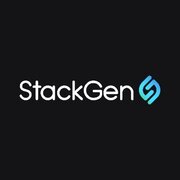
Best Infrastructure-as-Code (IaC) Tools 2025
What are Infrastructure-as-Code Tools? Infrastructure-as-Code (IaC) tools automate the management of IT infrastructure using programming languages and automation tools. These tools help businesses manage computer data centers located in the cloud or on-premises through code. They minimize the need for manual intervention and hardware controls when deploying and configuring servers, storage, databases, and networks. These documented configurations are stored in version control systems that ...
We’ve collected videos, features, and capabilities below. Take me there.
All Products
Learn More about Infrastructure-as-Code (IaC) Software
What are Infrastructure-as-Code Tools?
Infrastructure-as-Code (IaC) tools automate the management of IT infrastructure using programming languages and automation tools. These tools help businesses manage computer data centers located in the cloud or on-premises through code. They minimize the need for manual intervention and hardware controls when deploying and configuring servers, storage, databases, and networks. These documented configurations are stored in version control systems that enforce consistency and reduce turnaround time.
IaC tools promote agility, scalability, and resilience. They facilitate DevOps and NetOps, streamlining provisioning and maintenance by creating repeatable processes. IaC tools enable more cloud-based infrastructure provisioning by eliminating the need for access to physical hardware.
These tools manage orchestration, automate workflows, and support testing. Using domain-specific programming languages, APIs, and code repositories, IaC tools build and configure computer resources.
The consistency and integrity benefits of IaC are best realized with an immutable approach to infrastructure. When infrastructure changes are required, the setup is completely replaced with a new instance (version), as opposed to the ad hoc patching of a mutable infrastructure.
IaC can take one of two approaches when setting up IT infrastructure. They can be either functional, defining what the configuration should be, or procedural, how the configuration is to be modified to meet the requirements. There are two methods of implementing IaC. ‘Push’ methods have the controlling server push the configuration to the designated system, and ‘Pull’ has the server to be configured to pull its configuration from the controlling server.
There are four major functionalities of IaC tools:
- Infrastructure orchestration focuses on infrastructure provisioning, using the APIs of cloud providers and physical hardware to create infrastructure. These tools define virtual machines, balance loads, manage firewalls, orchestrate networks, and include dashboards for monitoring and alerts.
- Configuration management lets developers use code to define server configurations to manage applications, OS settings, access and permissions, disk formatting, security, and job scheduling.
- Developers use scripting tools to quickly create basic configurations.
- Container orchestration tools create images that include the libraries and components needed to execute an application. Containers are software packages that include the components required to execute in any environment.
Infrastructure-as-Code Tool Features
IaC tools should include most or all of the following features.
- Cloud and on-premises IT infrastructure automation
- Infrastructure provisioning
- Configuration management
- Scripting tools
- Container orchestration
- Template-driven deployment and configuration
- Automated workflows
- Application deployment
- Version Control
- Testing support
- Dashboards and alerts
Infrastructure-as-Code Tools Comparison
Consider the following when purchasing infrastructure-as-code tools:
- Deployment: Where will the IaC tool be deployed? Some tools are designed to support specific cloud service providers, others offer the flexibility to be used for a variety of cloud providers as well as on-premises locations.
- Use Case: Do you require scripting tools, configuration management tools, infrastructure or container orchestration tools, or a combination of them? Some vendors focus on certain IaC capabilities, while others offer a centralized platform for delivering IaC.
- Implementation and Management: Deploying IaC tools requires expertise and may entail a significant learning curve. Evaluate the resources required to successfully implement your selection.
Start an Infrastructure-as-Code tools comparison here
Pricing Information
Most tools require obtaining a vendor quote for feature-driven pricing options. A few basic cloud-based offerings begin at $20 a month per user. Some IaC cloud-based tools have pricing based upon the number of handler operations and their duration. Free trials are available.
Infrastructure-as-Code (IaC) FAQs
What Do Infrastructure-as-Code Tools Do?
What are the benefits of using Infrastructure-as-Code Tools?
Key benefits of IaC tools include:
- Cost savings
- Accelerated IT infrastructure delivery
- Risk mitigation - error reduction by minimizing manual intervention and by creating consistent and stable IT environments
- Fosters more efficient, scalable, and secure IT infrastructure
- Improved DevOps and NetOps
























